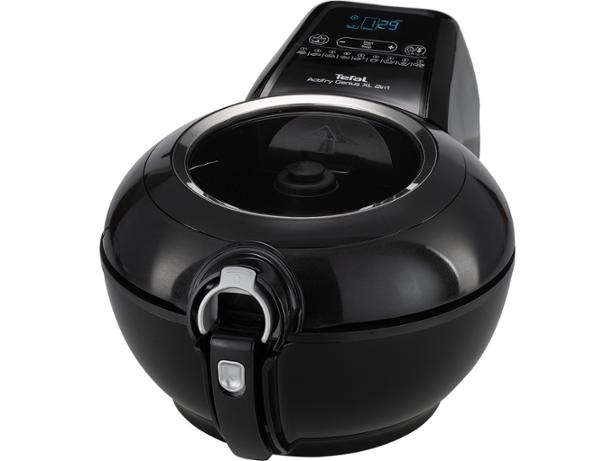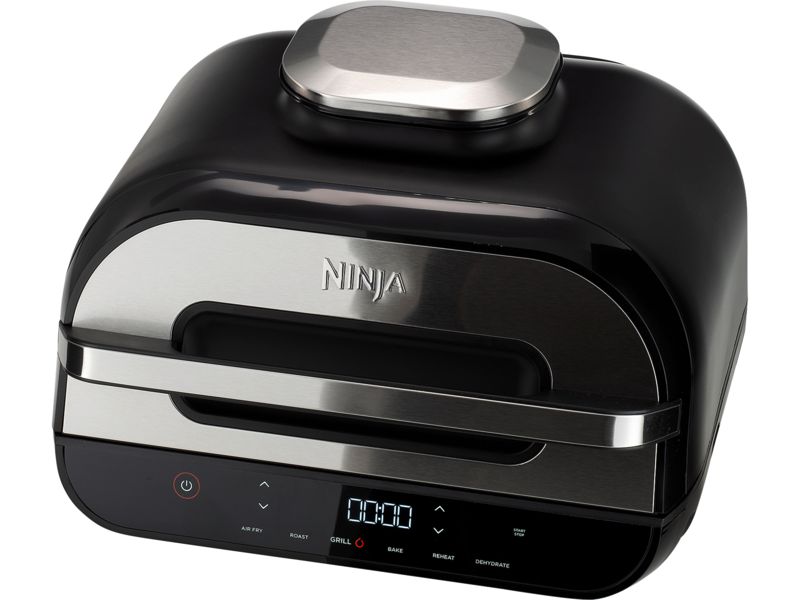By clicking a retailer link you consent to third-party cookies that track your onward journey. If you make a purchase, Which? will receive an affiliate commission, which supports our mission to be the UK's consumer champion.
Air fryer vs oven: energy usage, costs and cooking results compared

There’s a lot of hype around air fryers, but are they really a cheaper way to cook than using a regular oven? And what are the compromises?
For our air fryer vs oven test, we prepared a roast chicken, chips, a jacket potato and a cake in an air fryer and an oven, to compare how much energy they use, the energy costs and – most importantly – the cooking results.
Find out if an air fryer could replace your built-in oven in our expert test.
For in-depth, impartial advice on specific models, see our air fryer reviews.
Get our expert tips for making smarter consumer choices. Sign up for our free Weekly Scoop newsletter.
Is it really cheaper to use an air fryer?
Steph Kipling, Which? science team leader says:

‘In short, yes. Our research found that you can make considerable energy savings with an air fryer compared to an oven, particularly if you're only cooking small amounts. We found that often the air fryer used less than half the energy, and the results were just as tasty.
‘However, the savings soon drop off if you have to cook in batches. And if you have lots to cook, you might well end up batch cooking as air fryers don't have as much space as a typical oven. So when cooking a large amount of food, the oven may still be the most economical choice.’
For answers to more common air fryer questions, see our guide to the best air fryers.
Air fryer vs oven: energy, costs and cooking quality
We picked a range of popular foods to prepare: a whole chicken, chips, a jacket potato and even a cake.
We calculated energy costs based on an electricity unit price of 22.36p per kWh, the average capped rate for direct debit customers from 1 July 2024.
Roast chicken

Cheapest appliance: Air fryer
Best overall: Air fryer
| Cooking time | Energy used | Cost | Cooking quality | |
|---|---|---|---|---|
| Air fryer | 53 mins | 0.54kWh | 12p | 5 Juicy, flavoursome meat with a crispy brown skin |
| Built-in electric oven | 76 mins | 1.157 kWh | 26p | 4 Meat was a little dry but the skin was brown and crispy |
The oven cost 26p to cook a delicious-looking roast chicken, although the meat was a little dry. The air fryer cooked a perfect roast chicken, and cost only 12p. This may not sound like much of a difference, but if you were to cook a roast chicken this way once a week for a year, you’d save around £7.
Note that the size of the air fryer basket limits the size of chicken you could cook – ours was small, around 1.3kg. If you're making a full roast dinner, your oven may still be cheaper overall, as you’ll benefit from being able to use the surrounding oven space for other dishes.
Chips

Cheapest appliance: Air fryer
Best overall: Air fryer
| Cooking time | Energy used | Cost | Cooking quality | |
|---|---|---|---|---|
| Air fryer | 23 mins | 0.287kWh | 6p | 3 Some were cooked perfectly, but some on the bottom were undercooked |
| Built-in electric oven | 33 mins | 0.863kWh | 19p | 3.5 Inconsistent cooking, as some were too crispy |
It only cost 6p to cook two portions of chips in the air fryer and three times that to cook the same quantity in the oven.
The cooking results were pretty similar, with a mixture of over and undercooked chips – even though we stirred or shook them halfway through cooking.
The main drawback with the air fryer was the amount of food we were able to cook. The manufacturer of our model recommended only filling the basket halfway and using a maximum of 500g of chips – enough for two to three portions. If you’re feeding several people, or want to cook a few different food items at the same time, the oven has more space and may work out cheaper overall.
Jacket potato

Cheapest appliance: Air fryer
Best overall: Air fryer
| Cooking time | Energy used | Cost * | Cooking quality | |
|---|---|---|---|---|
| Air fryer | 48 mins | 0.392kWh | 9p | 5 Soft and tender inside, crispy skin |
| Built-in electric oven | 68 mins | 1.084kWh | 24p | 5 Well cooked with a signature crispy skin |
The air fryer once again proved its credentials over the oven, taking half the time and using around a third of the electricity. However, as with the other items we cooked, space was an issue and we could only fit one potato in at a time.
If you want to cook more than one, an oven would be your best bet. But for a single potato, an air fryer is ideal.
Need a larger air fryer? See the best dual air fryers.
Cake

Cheapest appliance: Air fryer
Best overall: Air fryer
| Cooking time | Energy used | Cost * | Cooking quality | |
|---|---|---|---|---|
| Air fryer | 33 mins | 0.223kWh | 5p | 5 Perfect cake, well risen and fluffy inside |
| Built-in oven | 56 mins | 0.71kWh | 16p | 4 Slightly dense in the middle but well risen |
Once again, the air fryer offers good results at the lowest cost. At only 5p, and baking in half the time of the oven, the air fryer is ideal for a quick and delicious cake when cravings strike.
At 16p, the oven costs around three times more than the air fryer.
However, because of the limited size of the air fryer, we had to make a smaller cake than we did in the other appliances. So if you’re planning a multi-tiered masterpiece, you'd need to stick to your trusty oven.
What we learned from our test
- It's really important to choose an air fryer that gives you the space you need. The cooking capacity of the air fryers we’ve tested ranges from 0.3kg to 2.2kg, so there are plenty of options.
- Consider the initial outlay when looking at cost savings, too. The air fryers we’ve tested cost anywhere between £30 and £250. So even though it may save you money compared with using an oven, it could be a while before it starts to pay for itself if you go for a pricier model.
Need even more cooking space and versatility? See our guide to the best multi cookers.
How to calculate appliance running costs

We calculated energy costs by measuring the amount of energy the appliances used during our laboratory tests. This is a very accurate method.
However, even if you don’t have access to calibrated lab equipment, you can still estimate energy cost using your appliance's power rating – you should be able to find this on the packaging, or on the appliance brand’s website.
1. Multiply the power rating (in Watts) by the time in hours that the appliance is running, and divide this by 1,000. This is the energy consumption in kilowatt hours (kWh).
2. Multiply this figure by the cost of energy (currently 22.36p/kWh for electricity) to get the cost.
Note that this equation might not be accurate for more complex products, as it assumes the product is always using maximum power.
Most of our air fryer reviews carry estimated running costs and you don’t need to be a Which? member to see them.
Find out more about how much your appliances cost to run.
Our research explained
The appliances we used in our test lab were chosen as typical examples of each product. We based this on their performance, energy usage, price and other factors. The quantities of all the foods were the same in each appliance (except for the cake in the air fryer) to ensure the tests were comparable.
The cooking times include preheating times where required and the energy consumption figures include the energy used during preheating and cooking.
We cooked:
- A 1.3-1.4kg roast chicken, enough for around three to four portions
- 320g of frozen chips, enough for two to three portions
- One potato, approximately 200g
- A basic three-egg sponge cake. The quantity had to be reduced for the cake to fit into the air fryer basket.
Our appliances:
- Bosch Serie 2 HHF113BR0B built-in electric oven
- Morphy Richards Health Fryer 480003 air fryer.



